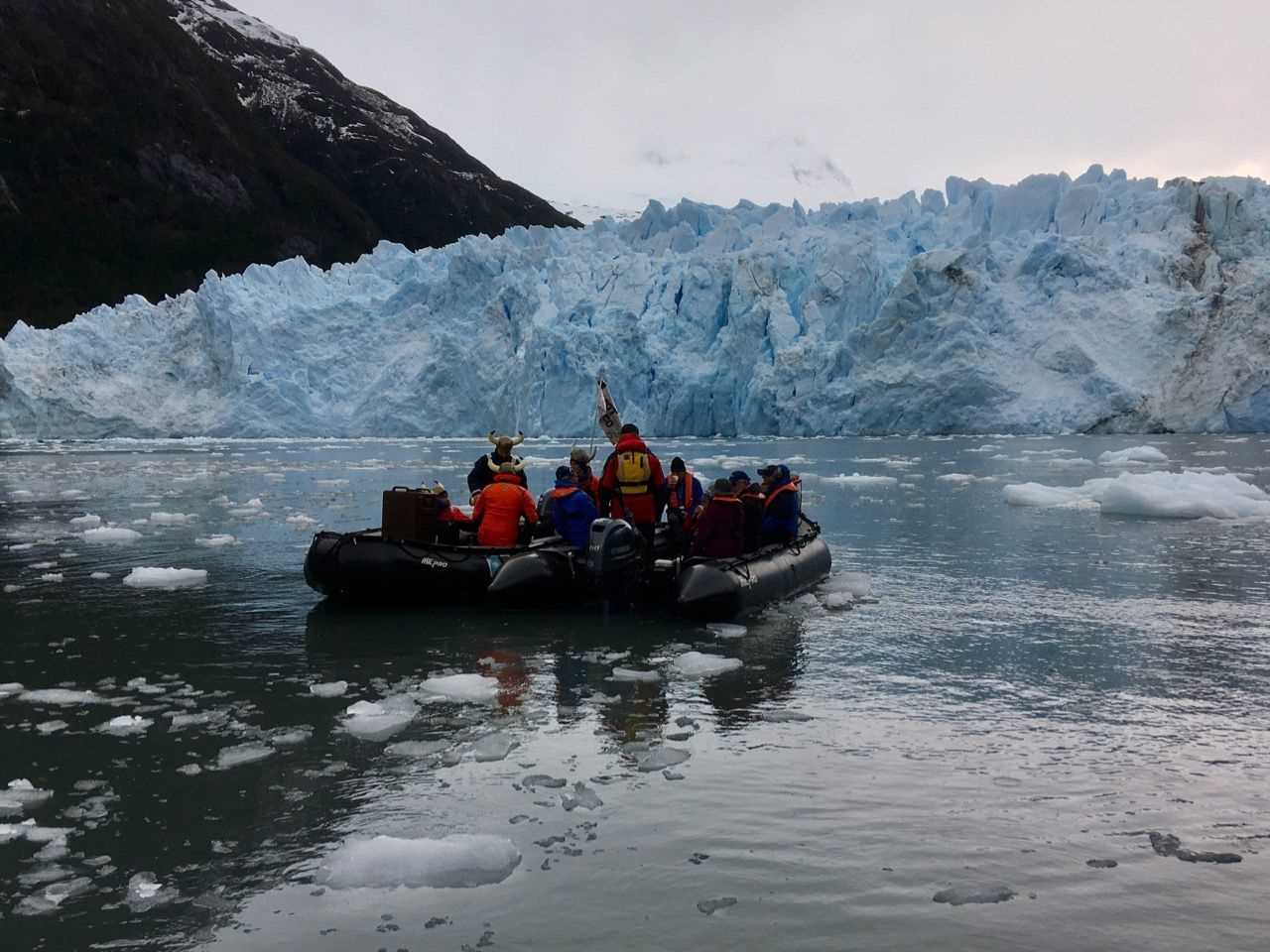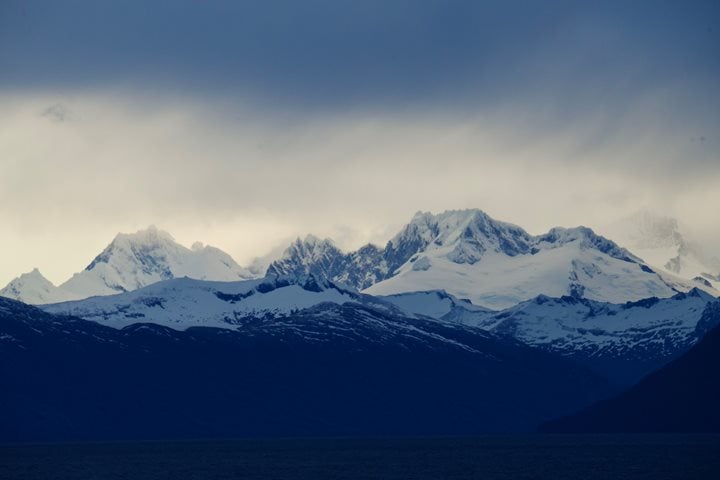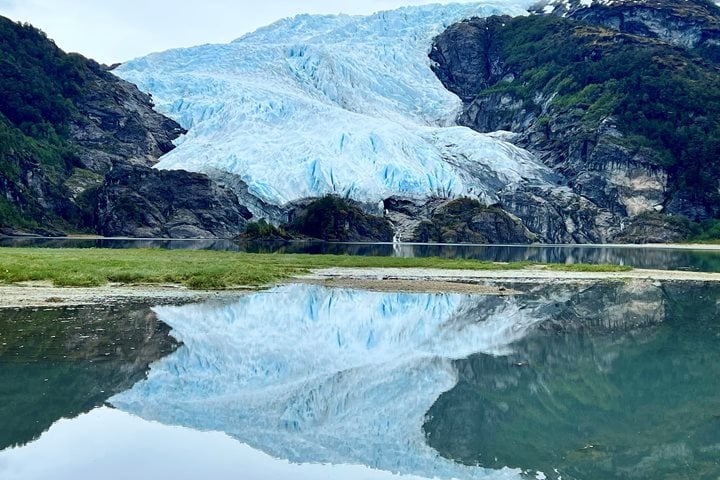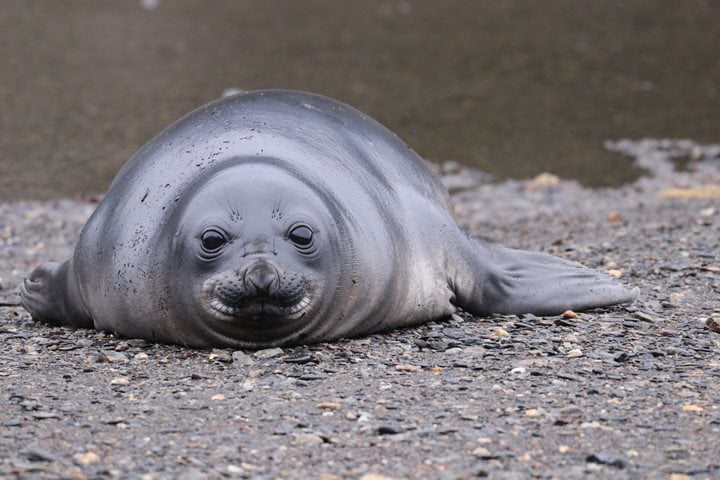This morning we awoke deep in the fjords of Cordillera Darwin. There were tall, sheer walls around and finally a bluish tidewater glacier, the Garibaldi Glacier, with its snout in the sea. The sky was overcast, yet bright enough—a perfect morning for a Zodiac cruise at the glacier’s face. There was plenty of ice in the water: brash, growler, and bergy bits. The accumulated remains of larger ice, the small brash ice makes snap, crackle, and pop noises as pressurized air escapes the weakened brash. Brash is the technical term, but I call it bash ice, which is what I do when driving through it. Despite being a navigational hazard, the much larger growlers (ice chunks rising no more than a meter above the water’s surface) are often quite beautiful, from white to blue to clear. The biggest and rarest ice in the water here is the bergy bit. While bergy bits sound small, they can be the size of a modest house, rising one to five meters above the water’s surface. It is not a true iceberg unless it rises more than five meters above the water.
The ice of the active Garibaldi Glacier calves frequently. The glacier is also advancing, a phenomenon being studied by our resident glaciologist Enaut. But it was not all glacier here. A very nice forest grew on top of any rock not completely vertical…and don’t even get me started on the lichens!
As a special treat, our hotel manager Patrik and his band of ‘loving and caring’ Vikings (his words) served fortified or pure hot chocolate to all the Zodiacs. During the early afternoon we explored other fjords and decided to do another Zodiac tour at Pia Glacier. Quieter than Garibaldi Glacier, this glacier has many nice waterfalls and birds, including the surprisingly flightless steamer duck—surprising because it ‘swims’ high on the surface of the water paddling with its feet and wings, making lots of noise and splashes.
The icy day was topped off by an asado dinner, heavy on the beef and lamb. For the vegetarians there was chicken and fish…jokingly said by Argentinian-born naturalist Santiago, who introduced this traditional barbecue dinner.







